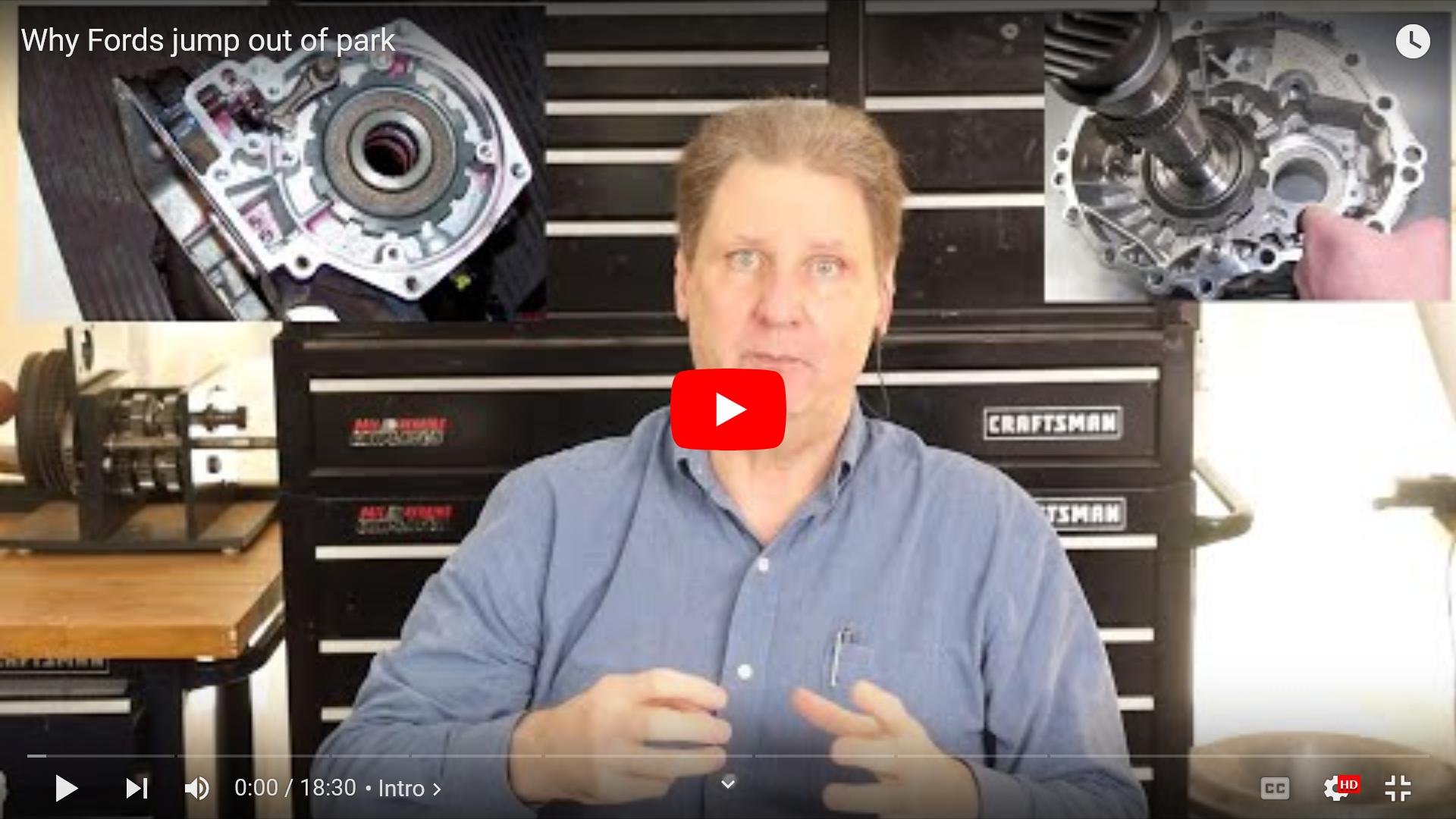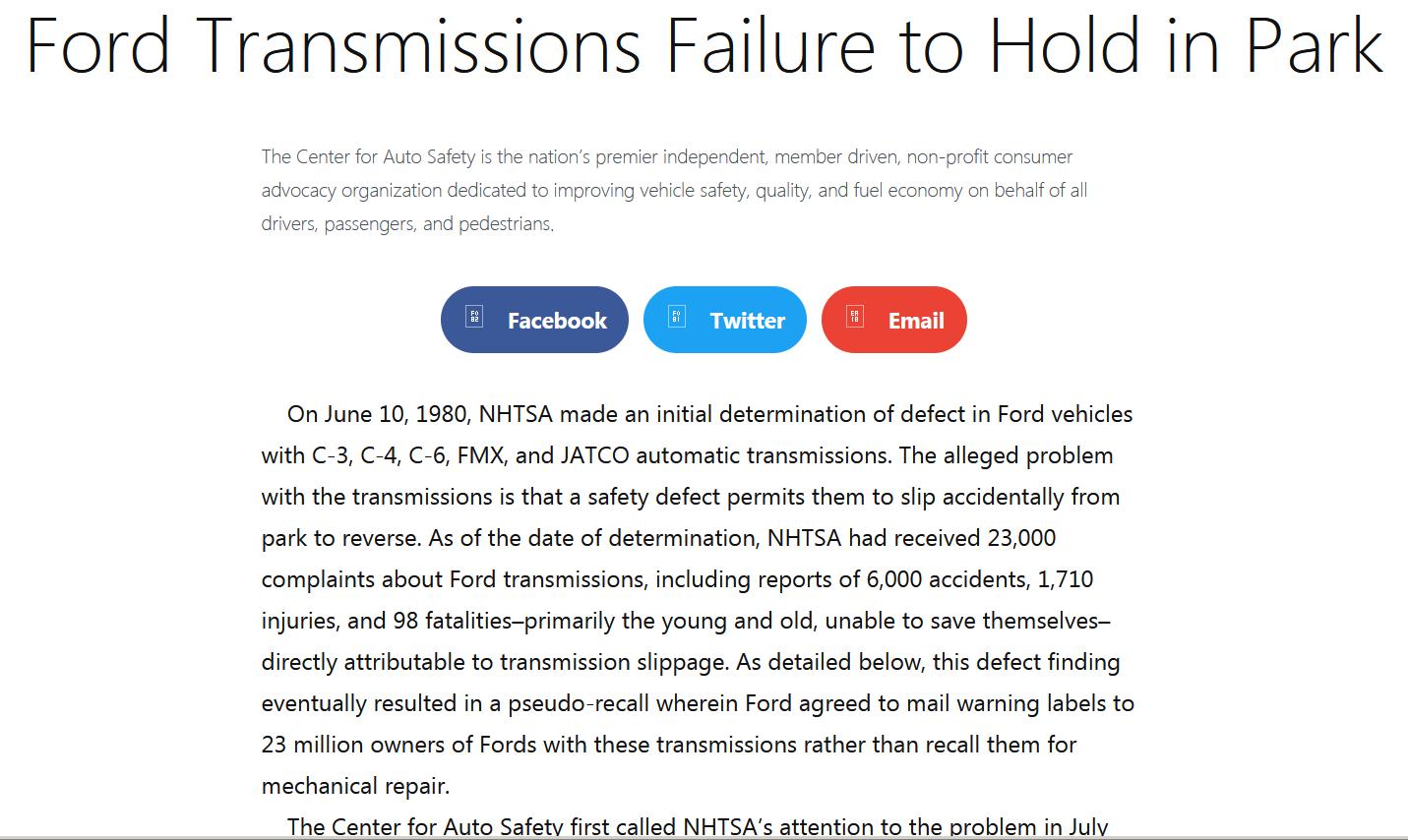Why Fords jump out of park
| Ford vehicles in the 1970s and 80s would routinely jump, pop, or hop out of park. If the engine was running, it could kill you. |
 |

Many old Ford vehicles would jump out of park. Some of this was due to worn parts, but some was due to assembly problems. The Center for Auto Safety noted in 1980 that the NHTSA (National Highway Traffic Safety Administration) said that Fords had a defect. They further noted that the NHTSA said there were 23,000 complaints, 6,000 accidents, 1,710 injuries, and 98 fatalities.
Working in the Truck group in 1980, I asked a power-train engineer why we didn't just copy Chevy. He said, "Because that would admit we have a problem." I never understood that mentality. If there is a better way to do things, do it that way, there is no shame. |

It turns out the popping out of park was a wicked combination of design, assembly, tolerance, and wear-out problems. This is still an issue, there was a 2017 recall for Fords with the same problem. Getting a lever in the cab to rotate a lever in the tranny is hard. |
|
|






